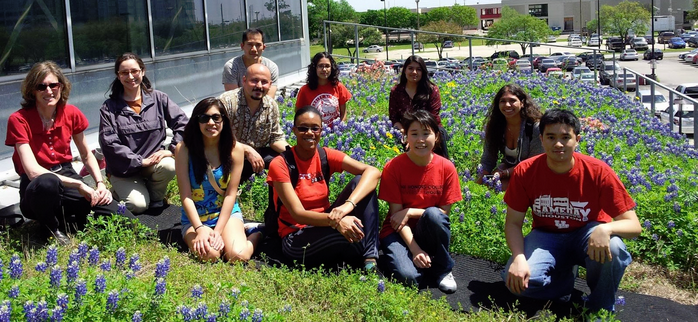This past Friday (11/21/14), we visited Dr. Jay Neal's aquaponics and mushroom lab in the UH Hilton College of Hotel and Restaurant Management! Given that we no longer have any hydroponic setups in our greenhouse, seeing such a large system was very exciting and refreshing. For many of our members, it was their first time seeing such a setup; the last time we had seen aquaponics in action was a few years back at the HCC Northwest Campus.
The aquaponics system, based on a larger setup at the HCC Northwest (Katy) Campus, has two main parts - the growing area for fish, and the planting space. Dr. Neal has over 100 tilapia growing in a large tank, and he said he could easily fit more if desired.

The water from the fish tank, which contains waste excreted by the tilapia, is cycled into the water that the plants' roots bathe in. The fish waste contains nitrogenous compounds which serves as a natural fertilizer that the plants can uptake, and in doing so they clean the water, which is returned to the fish tank. The system works very well - the fish and plants help each other grow, and in turn, both can be harvested and eaten or sold.

So far, Dr. Neal has been running the aquaponics system as a proof of concept; he has no current plans to sell any of the produce from the setup. He's also trying out his hand in mushroom gardening, but when we toured his lab, he had only recently inoculated the mushroom spores, so there was no visible growth yet.
Future work could include growing hops or grapes for the beer and wine tasting classes that also occur in the Hilton. For now, we had a great time looking at Dr. Neal's existing setup and learning about aquaponics.
























































